ARTIFICIAL PARADISES - RÓMMULO VIEIRA CONCEIÇÃO, LUCIA KOCH AND ALEKSANDRA MIR
The flows of architecture and circulation in continuous movement set the tone for the new commissioned and individual works that are exhibited now at the Inhotim Institute. There are three projects as the result of almost two years of inactivity, without openings, in the immense space of the cultural center located in Brumadinho, in Greater Belo Horizonte, capital of Minas Gerais. It is a mix between a botanical garden and a refuge for contemporary art works specially developed for the institution or that have been reformatted in this special exhibition context that extends over an old estate, now with 140 hectares of visitation.
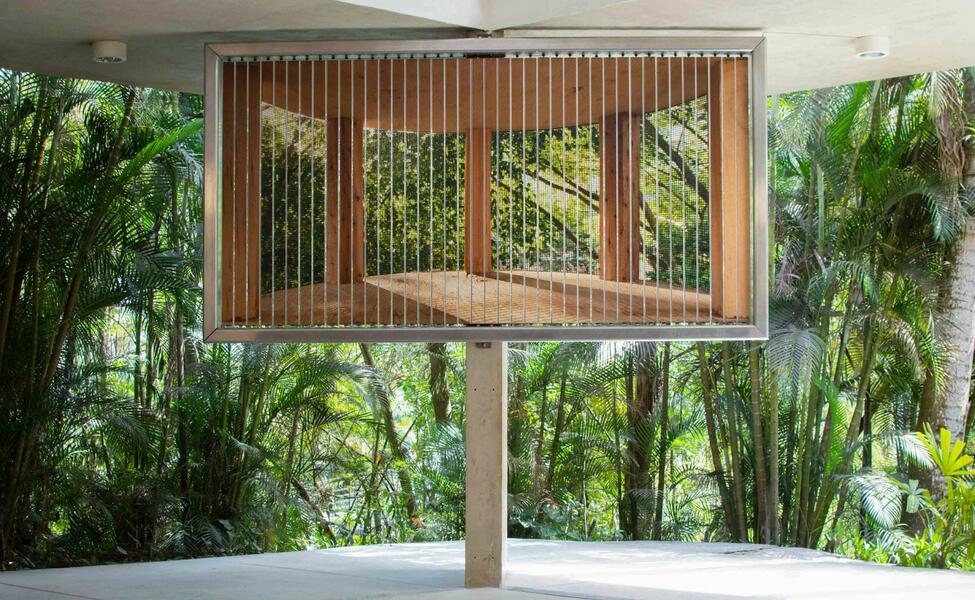
The program developed for the new works is called Specific Territory, conceived and directed by Douglas de Freitas (ex- Museum of the City of São Paulo), and offers pieces promoted by local characteristics and that can be exhibited in a context outside the museum (as artist Lucia Koch currently signs). Rommulo Vieira Conceição, an artist born in Bahia and living in Porto Alegre for more than two decades, formulated the installation The physical space can be an abstract, complex and under construction place based on investigations in nearby cities and in more historical cities of the state. The trio of openings is completed with the solo exhibition of the Polish artist Aleksandra Mir, Entre Terras, with large-format drawings made by the artist with good international traffic.
Rómmulo, inexplicably, still does not have such reception by the circuit that matches the quality of his production. But that might change today, with Inhotim and other robust presences in collectives such as Frestas, a triennial exhibition promoted by Sesc (a kind of ministry of culture in the private sector), and in 4x5 - Landscape, at the Marilia Razuk gallery in São Paulo. The fact is that The physical space can be an abstract... condenses some of his main investigations and, in formal terms, represents the three-dimensionality of the entire poetic force of the author.
In the sculptural installation, the artist creates a kind of failed playground. With bright and colorful metal structures, the furniture is located on one of the green boulevards of Inhotim, next to the Cosmococa pavilion, by Hélio Oiticica (1937-1980), an unavoidable name of Brazilian art and one of the main national attractions of the space. But something frustrates the general public: in a structure that resembles a good interactivity toy, urban indexes are placed that, a priori, look alien within the whole. Elements of diverse religious architecture, such as arches, domes, pediments and flowerpots, are placed on bars, stairs and other constructions that prevent free enjoyment. It could be a metaphor for the Babel faith of globalized cities, however this would be too obvious an interpretation.
Rómmulo draws visual triggers from the culture of fear and surveillance with its own attributes in the country that refer to something serious in the Brazilian megalopolises. A culture that literally turns its back on the other, partisan, and draws perversity in public debates and that, at the very least, infantilizes behaviors in current agoras, the web and social networks. The traces of this mixture of individualism with narcissistic characteristics and ardent solipsism materialize in the prevailing (non)architecture in large population groups, in large buildings that raise high walls and which can only be accessed in a labyrinthine way, in condominiums that celebrate the rural life in rich environments that are isolated from pockets of poverty, from the growing neglect of public places populated by a growing crowd of homeless people, from historical memory pulverized into ruins and poured into buildings that boast the vulgarity of gourmet balconies and trace progressive imitations of the classical and "elegant" Greek style. In this, religious constructions and the increasingly narrow parameters of education -in the installation one can see some data that portray typologies of school architecture- help to shape the short circuit evidenced by Rómmulo within a work that touches antimony and poses questions based on seductive formal-visual data (which denote advances within the artist's production).
-
O espaço fisico pode ser um lugar complexo, abstrato e em construção (2021), de Rommulo Vieira Conceição, instalada no Jardim Sombra e Água Fresca no Instituto Inhotim. Foto: Carolina Lopes
-
O espaço fisico pode ser um lugar complexo, abstrato e em construção (2021), de Rommulo Vieira Conceição, instalada no Jardim Sombra e Água Fresca no Instituto Inhotim. Foto: Carolina Lopes
-
O espaço fisico pode ser um lugar complexo, abstrato e em construção (2021), de Rommulo Vieira Conceição, instalada no Jardim Sombra e Água Fresca no Instituto Inhotim. Foto: Carolina Lopes
In Propaganda, a series signed by Lucia Koch within Inhotim and in the streets of Brumadinho, the artist continues to work on the expansion of very particular architectures. The small internals of various packages gain maximized contours and now use the structure of mass communication to provoke intriguing images. The billboards, banned in some of the country's largest cities for generating visual pollution, are turned into photographs that remove unusual images of what has just been discarded. The red tints of the old charcoal sacks and the straight lines close to a Van der Rohe modernism that adorned mere cheese stalls, for example, gain a maximized circulation both in the museum gardens and in the urban fabric of Brumadinho. The funny thing is that they are mobile advertisements: the multiplicity of advertisements is guaranteed by the somewhat noisy movement of these billboards that alter the images through structures reminiscent of a brise-soleil, that stony clause in Corbusier's ideals.
-
PROPAGANDA (2021), de Lucia Koch, instalada na Península do Instituto Inhotim. Foto: Carolina Lopes
-
PROPAGANDA (2021), de Lucia Koch, instalada na Península do Instituto Inhotim. Foto: Carolina Lopes
-
PROPAGANDA (2021), de Lucia Koch, instalada na Península do Instituto Inhotim. Foto: Carolina Lopes
-
PROPAGANDA (2021), de Lucia Koch, instalada na Península do Instituto Inhotim. Foto: Carolina Lopes
And the Swedish-American Aleksandra Mir presents four drawings from the Mediterranean series, from 2007, in an exhibition space within the cultural center. Made with a Sharpie marker until it runs out of ink, which causes the color to vary from deep black to brittle gray, the pieces were made in Sicily and combine historical and social commentary with a certain humor to clear graphic prowess. Born in Poland and currently based in London, the artist is influenced by the aesthetics of Eastern European cartoons, a very active genre in the countries of the region even in the lead years, and evokes the uninterrupted flows of circulation since Antiquity with striking and particularly contemporary panoramas. In this way, she inserts drawing as an avant-garde medium in an artistic locus that exposes names such as Janet Cardiff, Doug Aitken, Chris Burden (1946-2015), Giuseppe Penone, Cildo Meireles, Tunga (1952-2016), Victor Grippo (1936 -2002) and Doris Salcedo, among many others.
Exhibitions: Specific Territory - Rommulo Vieira Conceição and Lucia Koch; Entre Terras - Aleksandra Mir
Curator: Douglas de Freitas
Instituto Inhotim (Rua B, 20 Fazenda Inhotim, Brumadinho - MG, 35460-000, Brazil)
Related Topics
May interest you
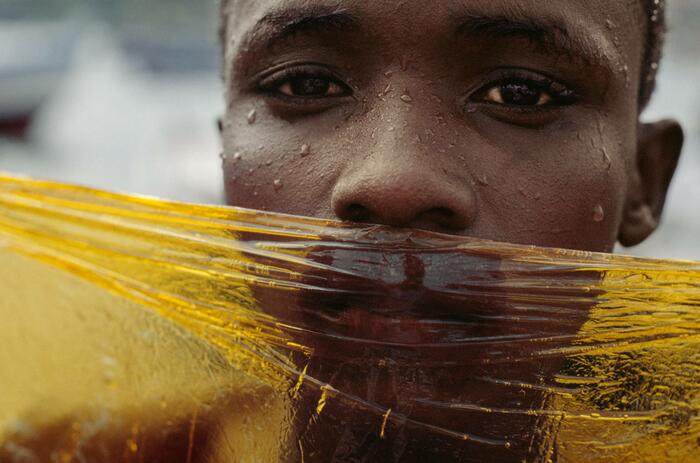
The 322 pieces that make up Espíritos sem nome (Nameless Spirits), a retrospective dedicated to the production of the Bahian Mario Cravo Neto (1947-2009) at the São Paulo headquarters of the Moreira Salles Institute, attest to his vigor as a visual artist; With the robustness of his work, he permeates media beyond photography, since he produces pieces in languages such as cinema, the three-dimensional, drawing and publishing, among others.
CONTEMPORARY AND TIMELESS - MARIO CRAVO NETO: NAMELESS SPIRITS
The 322 pieces that make up Espíritos sem nome (Nameless Spirits), a retrospective dedicated to the production of the Bahian Mario Cravo Neto (1947-2009) at the São Paulo headquarters of the Moreira Salles Institute, attest to his vigor as a visual artist; With the robustness of his work, he permeates media beyond photography, since he produces pieces in languages such as cinema, the three-dimensional, drawing and publishing, among others.

The 322 pieces that make up Espíritos sem nome (Nameless Spirits), a retrospective dedicated to the production of the Bahian Mario Cravo Neto (1947-2009) at the São Paulo headquarters of the Moreira Salles Institute, attest to his vigor as a visual artist; With the robustness of his work, he permeates media beyond photography, since he produces pieces in languages such as cinema, the three-dimensional, drawing and publishing, among others.
CONTEMPORARY AND TIMELESS - MARIO CRAVO NETO: NAMELESS SPIRITS
The 322 pieces that make up Espíritos sem nome (Nameless Spirits), a retrospective dedicated to the production of the Bahian Mario Cravo Neto (1947-2009) at the São Paulo headquarters of the Moreira Salles Institute, attest to his vigor as a visual artist; With the robustness of his work, he permeates media beyond photography, since he produces pieces in languages such as cinema, the three-dimensional, drawing and publishing, among others.
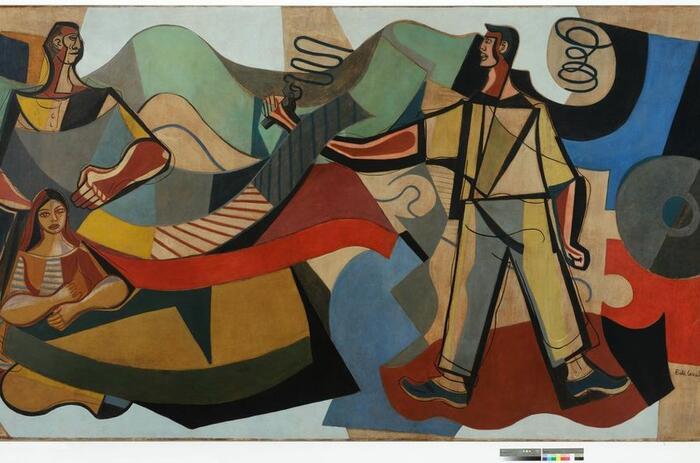
The narratives of the Brazilian avant-garde in the arts go through an intense revision. Due to the centenary of the Week of 22, the emblematic event that in the thesis launched the foundations of modernity through different languagesand fields of activity in the country, three exhibitions currently on the billboard rotate and bring new elements from the production of two icons of Modernism in Visual Arts - Tarsila Do Amaral (1886-1973) and Di Cavalcanti (1897-1976). In addition, they cast more emphatic lights on three not-so-famous characters within the journeys within the movement and the modernist winds: Antonio Gomide (1895-1967), John Graz (1891-1980) and Regina Gomide-Graz (1897-1973) .
MODERNITIES IN MOVEMENT - TARSILA, DI CAVALCANTI AND THE GOMIDE-GRAZ FAMILY
The narratives of the Brazilian avant-garde in the arts go through an intense revision. Due to the centenary of the Week of 22, the emblematic event that in the thesis launched the foundations of modernity through different languagesand fields of activity in the country, three exhibitions currently on the billboard rotate and bring new elements from the production of two icons of Modernism in Visual Arts - Tarsila Do Amaral (1886-1973) and Di Cavalcanti (1897-1976). In addition, they cast more emphatic lights on three not-so-famous characters within the journeys within the movement and the modernist winds: Antonio Gomide (1895-1967), John Graz (1891-1980) and Regina Gomide-Graz (1897-1973) .
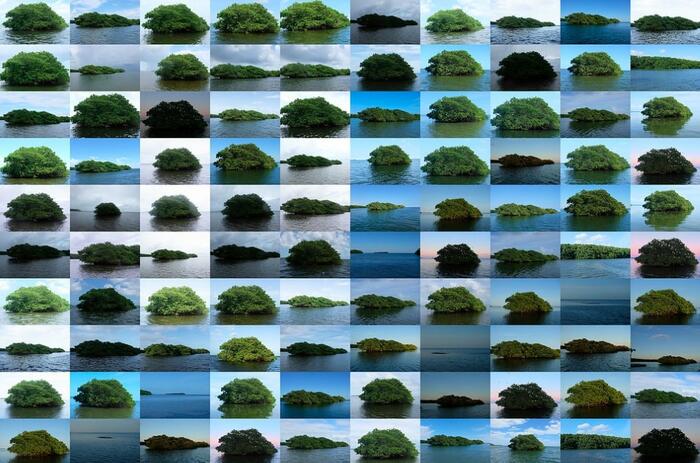
In her first solo exhibition at the Deering Estate, Amalia Caputo considers how we construct nature and explore a site around systems of visual classification. Every Being is an Island is an immersive exhibition that serves as an extensive portrait of the native subtropical environment of South Florida.
THE SUM OF ITS PARTS: AMALIA CAPUTO’S ‘EVERY BEING IS AN ISLAND’
In her first solo exhibition at the Deering Estate, Amalia Caputo considers how we construct nature and explore a site around systems of visual classification. Every Being is an Island is an immersive exhibition that serves as an extensive portrait of the native subtropical environment of South Florida.
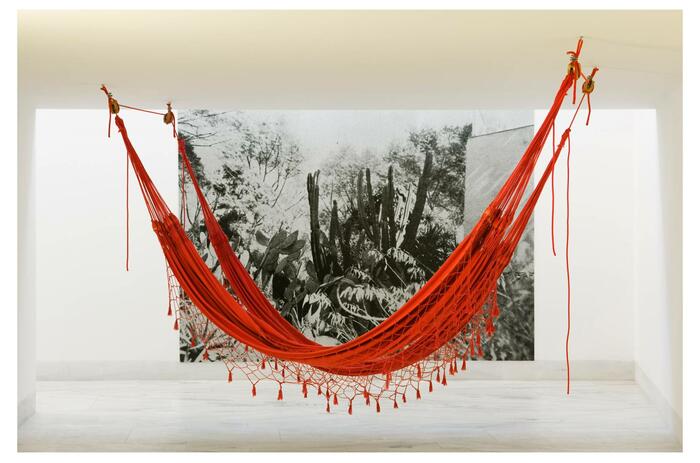
Curated by Isabella Lenzi, and running until November 20th, Só é possível se formos 2 [It is only possible if there are 2 of us] is exhibited in the Sala Fernando Pessoa of the Consulate General of Portugal in São Paulo. The exhibition proposes a dialogue between the Brazilian Anna Costa e Silva and the Portuguese Fernanda Fragateiro, two artists from different generations, practices and trajectories, who converge in their desires to think beyond the limits of the individual.
ARTISTIC CORRESPONDENCE BETWEEN BRAZIL AND PORTUGAL
Curated by Isabella Lenzi, and running until November 20th, Só é possível se formos 2 [It is only possible if there are 2 of us] is exhibited in the Sala Fernando Pessoa of the Consulate General of Portugal in São Paulo. The exhibition proposes a dialogue between the Brazilian Anna Costa e Silva and the Portuguese Fernanda Fragateiro, two artists from different generations, practices and trajectories, who converge in their desires to think beyond the limits of the individual.
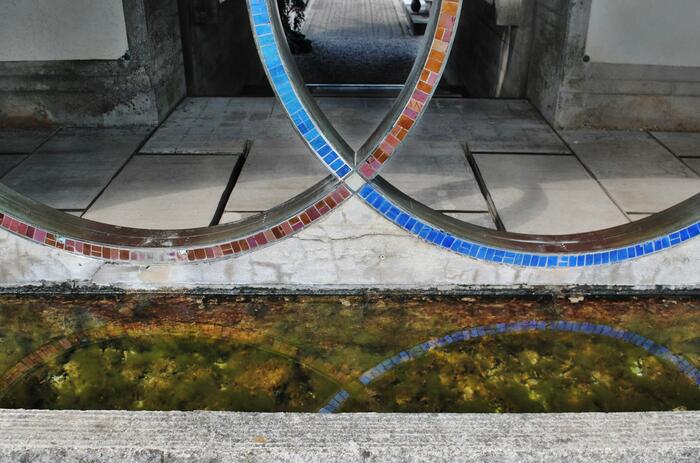
"Venice, nenuphar city" ... says the poet Paul Morand in his magnificent book Venises, plural. Venice, in addition to being host of the most famous biennials, today on its seventeenth edition in architecture, is in its plurality the land of one of the great masters of 20th century architecture, Carlo Scarpa.
CARLO SCARPA, VENICE, THE ENIGMA IN THE POETIC
"Venice, nenuphar city" ... says the poet Paul Morand in his magnificent book Venises, plural. Venice, in addition to being host of the most famous biennials, today on its seventeenth edition in architecture, is in its plurality the land of one of the great masters of 20th century architecture, Carlo Scarpa.

“Moving with great fluidity between spirituality, the production of visuality, academic reflection and political action, Heráclito is explicit when he says that he wants to ‘act, in a symbolic way, on the devastating consequences of racism and social inequality that affect the black populations'." In this way, the curator and researcher Solange Farkas (Videobrasil and ex-MAM Bahía) summarizes the approach to the production of Ayrson Heráclito, a Bahian artist who won a retrospective at the MAR (Museu de Arte do Rio) and who had an important recent solo show at the Simões de Assis Gallery, in São Paulo.
DIASPORAS AND ATLANTIC COMMUNIONS - YORUBÁIANO AND JUNTÓ: AYRSON HERÁCLITO
“Moving with great fluidity between spirituality, the production of visuality, academic reflection and political action, Heráclito is explicit when he says that he wants to ‘act, in a symbolic way, on the devastating consequences of racism and social inequality that affect the black populations'." In this way, the curator and researcher Solange Farkas (Videobrasil and ex-MAM Bahía) summarizes the approach to the production of Ayrson Heráclito, a Bahian artist who won a retrospective at the MAR (Museu de Arte do Rio) and who had an important recent solo show at the Simões de Assis Gallery, in São Paulo.
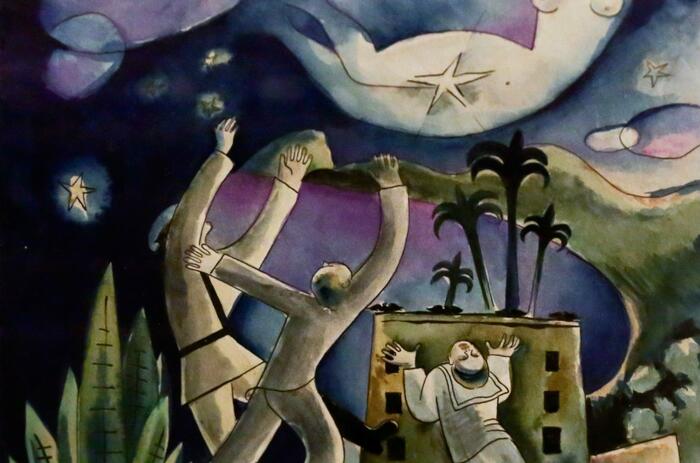
On the occasion of the centenary anniversary of the 1922 Modern Art Week, a key event for the artistic avant-gardes in Brazil and which consolidated what would become known as modernism in the country, several exhibitions throughout the year (and also in 2021) revolved around, discussed, explained, replaced and 'cancelled' such an initiative. Considered a milestone in the cultural renewal of Brazilian art, the week was about to turn around in its already canonical grave.
AN AVANT-GARDE IN LOCAL COLORS - ONCE UPON A MODERN TIME
On the occasion of the centenary anniversary of the 1922 Modern Art Week, a key event for the artistic avant-gardes in Brazil and which consolidated what would become known as modernism in the country, several exhibitions throughout the year (and also in 2021) revolved around, discussed, explained, replaced and 'cancelled' such an initiative. Considered a milestone in the cultural renewal of Brazilian art, the week was about to turn around in its already canonical grave.

The 322 pieces that make up Espíritos sem nome (Nameless Spirits), a retrospective dedicated to the production of the Bahian Mario Cravo Neto (1947-2009) at the São Paulo headquarters of the Moreira Salles Institute, attest to his vigor as a visual artist; With the robustness of his work, he permeates media beyond photography, since he produces pieces in languages such as cinema, the three-dimensional, drawing and publishing, among others.
CONTEMPORARY AND TIMELESS - MARIO CRAVO NETO: NAMELESS SPIRITS
The 322 pieces that make up Espíritos sem nome (Nameless Spirits), a retrospective dedicated to the production of the Bahian Mario Cravo Neto (1947-2009) at the São Paulo headquarters of the Moreira Salles Institute, attest to his vigor as a visual artist; With the robustness of his work, he permeates media beyond photography, since he produces pieces in languages such as cinema, the three-dimensional, drawing and publishing, among others.

The narratives of the Brazilian avant-garde in the arts go through an intense revision. Due to the centenary of the Week of 22, the emblematic event that in the thesis launched the foundations of modernity through different languagesand fields of activity in the country, three exhibitions currently on the billboard rotate and bring new elements from the production of two icons of Modernism in Visual Arts - Tarsila Do Amaral (1886-1973) and Di Cavalcanti (1897-1976). In addition, they cast more emphatic lights on three not-so-famous characters within the journeys within the movement and the modernist winds: Antonio Gomide (1895-1967), John Graz (1891-1980) and Regina Gomide-Graz (1897-1973) .
MODERNITIES IN MOVEMENT - TARSILA, DI CAVALCANTI AND THE GOMIDE-GRAZ FAMILY
The narratives of the Brazilian avant-garde in the arts go through an intense revision. Due to the centenary of the Week of 22, the emblematic event that in the thesis launched the foundations of modernity through different languagesand fields of activity in the country, three exhibitions currently on the billboard rotate and bring new elements from the production of two icons of Modernism in Visual Arts - Tarsila Do Amaral (1886-1973) and Di Cavalcanti (1897-1976). In addition, they cast more emphatic lights on three not-so-famous characters within the journeys within the movement and the modernist winds: Antonio Gomide (1895-1967), John Graz (1891-1980) and Regina Gomide-Graz (1897-1973) .

In her first solo exhibition at the Deering Estate, Amalia Caputo considers how we construct nature and explore a site around systems of visual classification. Every Being is an Island is an immersive exhibition that serves as an extensive portrait of the native subtropical environment of South Florida.
THE SUM OF ITS PARTS: AMALIA CAPUTO’S ‘EVERY BEING IS AN ISLAND’
In her first solo exhibition at the Deering Estate, Amalia Caputo considers how we construct nature and explore a site around systems of visual classification. Every Being is an Island is an immersive exhibition that serves as an extensive portrait of the native subtropical environment of South Florida.

Curated by Isabella Lenzi, and running until November 20th, Só é possível se formos 2 [It is only possible if there are 2 of us] is exhibited in the Sala Fernando Pessoa of the Consulate General of Portugal in São Paulo. The exhibition proposes a dialogue between the Brazilian Anna Costa e Silva and the Portuguese Fernanda Fragateiro, two artists from different generations, practices and trajectories, who converge in their desires to think beyond the limits of the individual.
ARTISTIC CORRESPONDENCE BETWEEN BRAZIL AND PORTUGAL
Curated by Isabella Lenzi, and running until November 20th, Só é possível se formos 2 [It is only possible if there are 2 of us] is exhibited in the Sala Fernando Pessoa of the Consulate General of Portugal in São Paulo. The exhibition proposes a dialogue between the Brazilian Anna Costa e Silva and the Portuguese Fernanda Fragateiro, two artists from different generations, practices and trajectories, who converge in their desires to think beyond the limits of the individual.

"Venice, nenuphar city" ... says the poet Paul Morand in his magnificent book Venises, plural. Venice, in addition to being host of the most famous biennials, today on its seventeenth edition in architecture, is in its plurality the land of one of the great masters of 20th century architecture, Carlo Scarpa.
CARLO SCARPA, VENICE, THE ENIGMA IN THE POETIC
"Venice, nenuphar city" ... says the poet Paul Morand in his magnificent book Venises, plural. Venice, in addition to being host of the most famous biennials, today on its seventeenth edition in architecture, is in its plurality the land of one of the great masters of 20th century architecture, Carlo Scarpa.

“Moving with great fluidity between spirituality, the production of visuality, academic reflection and political action, Heráclito is explicit when he says that he wants to ‘act, in a symbolic way, on the devastating consequences of racism and social inequality that affect the black populations'." In this way, the curator and researcher Solange Farkas (Videobrasil and ex-MAM Bahía) summarizes the approach to the production of Ayrson Heráclito, a Bahian artist who won a retrospective at the MAR (Museu de Arte do Rio) and who had an important recent solo show at the Simões de Assis Gallery, in São Paulo.
DIASPORAS AND ATLANTIC COMMUNIONS - YORUBÁIANO AND JUNTÓ: AYRSON HERÁCLITO
“Moving with great fluidity between spirituality, the production of visuality, academic reflection and political action, Heráclito is explicit when he says that he wants to ‘act, in a symbolic way, on the devastating consequences of racism and social inequality that affect the black populations'." In this way, the curator and researcher Solange Farkas (Videobrasil and ex-MAM Bahía) summarizes the approach to the production of Ayrson Heráclito, a Bahian artist who won a retrospective at the MAR (Museu de Arte do Rio) and who had an important recent solo show at the Simões de Assis Gallery, in São Paulo.

On the occasion of the centenary anniversary of the 1922 Modern Art Week, a key event for the artistic avant-gardes in Brazil and which consolidated what would become known as modernism in the country, several exhibitions throughout the year (and also in 2021) revolved around, discussed, explained, replaced and 'cancelled' such an initiative. Considered a milestone in the cultural renewal of Brazilian art, the week was about to turn around in its already canonical grave.
AN AVANT-GARDE IN LOCAL COLORS - ONCE UPON A MODERN TIME
On the occasion of the centenary anniversary of the 1922 Modern Art Week, a key event for the artistic avant-gardes in Brazil and which consolidated what would become known as modernism in the country, several exhibitions throughout the year (and also in 2021) revolved around, discussed, explained, replaced and 'cancelled' such an initiative. Considered a milestone in the cultural renewal of Brazilian art, the week was about to turn around in its already canonical grave.

The 322 pieces that make up Espíritos sem nome (Nameless Spirits), a retrospective dedicated to the production of the Bahian Mario Cravo Neto (1947-2009) at the São Paulo headquarters of the Moreira Salles Institute, attest to his vigor as a visual artist; With the robustness of his work, he permeates media beyond photography, since he produces pieces in languages such as cinema, the three-dimensional, drawing and publishing, among others.
CONTEMPORARY AND TIMELESS - MARIO CRAVO NETO: NAMELESS SPIRITS
The 322 pieces that make up Espíritos sem nome (Nameless Spirits), a retrospective dedicated to the production of the Bahian Mario Cravo Neto (1947-2009) at the São Paulo headquarters of the Moreira Salles Institute, attest to his vigor as a visual artist; With the robustness of his work, he permeates media beyond photography, since he produces pieces in languages such as cinema, the three-dimensional, drawing and publishing, among others.

The narratives of the Brazilian avant-garde in the arts go through an intense revision. Due to the centenary of the Week of 22, the emblematic event that in the thesis launched the foundations of modernity through different languagesand fields of activity in the country, three exhibitions currently on the billboard rotate and bring new elements from the production of two icons of Modernism in Visual Arts - Tarsila Do Amaral (1886-1973) and Di Cavalcanti (1897-1976). In addition, they cast more emphatic lights on three not-so-famous characters within the journeys within the movement and the modernist winds: Antonio Gomide (1895-1967), John Graz (1891-1980) and Regina Gomide-Graz (1897-1973) .
MODERNITIES IN MOVEMENT - TARSILA, DI CAVALCANTI AND THE GOMIDE-GRAZ FAMILY
The narratives of the Brazilian avant-garde in the arts go through an intense revision. Due to the centenary of the Week of 22, the emblematic event that in the thesis launched the foundations of modernity through different languagesand fields of activity in the country, three exhibitions currently on the billboard rotate and bring new elements from the production of two icons of Modernism in Visual Arts - Tarsila Do Amaral (1886-1973) and Di Cavalcanti (1897-1976). In addition, they cast more emphatic lights on three not-so-famous characters within the journeys within the movement and the modernist winds: Antonio Gomide (1895-1967), John Graz (1891-1980) and Regina Gomide-Graz (1897-1973) .

In her first solo exhibition at the Deering Estate, Amalia Caputo considers how we construct nature and explore a site around systems of visual classification. Every Being is an Island is an immersive exhibition that serves as an extensive portrait of the native subtropical environment of South Florida.
THE SUM OF ITS PARTS: AMALIA CAPUTO’S ‘EVERY BEING IS AN ISLAND’
In her first solo exhibition at the Deering Estate, Amalia Caputo considers how we construct nature and explore a site around systems of visual classification. Every Being is an Island is an immersive exhibition that serves as an extensive portrait of the native subtropical environment of South Florida.

Curated by Isabella Lenzi, and running until November 20th, Só é possível se formos 2 [It is only possible if there are 2 of us] is exhibited in the Sala Fernando Pessoa of the Consulate General of Portugal in São Paulo. The exhibition proposes a dialogue between the Brazilian Anna Costa e Silva and the Portuguese Fernanda Fragateiro, two artists from different generations, practices and trajectories, who converge in their desires to think beyond the limits of the individual.
ARTISTIC CORRESPONDENCE BETWEEN BRAZIL AND PORTUGAL
Curated by Isabella Lenzi, and running until November 20th, Só é possível se formos 2 [It is only possible if there are 2 of us] is exhibited in the Sala Fernando Pessoa of the Consulate General of Portugal in São Paulo. The exhibition proposes a dialogue between the Brazilian Anna Costa e Silva and the Portuguese Fernanda Fragateiro, two artists from different generations, practices and trajectories, who converge in their desires to think beyond the limits of the individual.

"Venice, nenuphar city" ... says the poet Paul Morand in his magnificent book Venises, plural. Venice, in addition to being host of the most famous biennials, today on its seventeenth edition in architecture, is in its plurality the land of one of the great masters of 20th century architecture, Carlo Scarpa.
CARLO SCARPA, VENICE, THE ENIGMA IN THE POETIC
"Venice, nenuphar city" ... says the poet Paul Morand in his magnificent book Venises, plural. Venice, in addition to being host of the most famous biennials, today on its seventeenth edition in architecture, is in its plurality the land of one of the great masters of 20th century architecture, Carlo Scarpa.

“Moving with great fluidity between spirituality, the production of visuality, academic reflection and political action, Heráclito is explicit when he says that he wants to ‘act, in a symbolic way, on the devastating consequences of racism and social inequality that affect the black populations'." In this way, the curator and researcher Solange Farkas (Videobrasil and ex-MAM Bahía) summarizes the approach to the production of Ayrson Heráclito, a Bahian artist who won a retrospective at the MAR (Museu de Arte do Rio) and who had an important recent solo show at the Simões de Assis Gallery, in São Paulo.
DIASPORAS AND ATLANTIC COMMUNIONS - YORUBÁIANO AND JUNTÓ: AYRSON HERÁCLITO
“Moving with great fluidity between spirituality, the production of visuality, academic reflection and political action, Heráclito is explicit when he says that he wants to ‘act, in a symbolic way, on the devastating consequences of racism and social inequality that affect the black populations'." In this way, the curator and researcher Solange Farkas (Videobrasil and ex-MAM Bahía) summarizes the approach to the production of Ayrson Heráclito, a Bahian artist who won a retrospective at the MAR (Museu de Arte do Rio) and who had an important recent solo show at the Simões de Assis Gallery, in São Paulo.

On the occasion of the centenary anniversary of the 1922 Modern Art Week, a key event for the artistic avant-gardes in Brazil and which consolidated what would become known as modernism in the country, several exhibitions throughout the year (and also in 2021) revolved around, discussed, explained, replaced and 'cancelled' such an initiative. Considered a milestone in the cultural renewal of Brazilian art, the week was about to turn around in its already canonical grave.
AN AVANT-GARDE IN LOCAL COLORS - ONCE UPON A MODERN TIME
On the occasion of the centenary anniversary of the 1922 Modern Art Week, a key event for the artistic avant-gardes in Brazil and which consolidated what would become known as modernism in the country, several exhibitions throughout the year (and also in 2021) revolved around, discussed, explained, replaced and 'cancelled' such an initiative. Considered a milestone in the cultural renewal of Brazilian art, the week was about to turn around in its already canonical grave.

The 322 pieces that make up Espíritos sem nome (Nameless Spirits), a retrospective dedicated to the production of the Bahian Mario Cravo Neto (1947-2009) at the São Paulo headquarters of the Moreira Salles Institute, attest to his vigor as a visual artist; With the robustness of his work, he permeates media beyond photography, since he produces pieces in languages such as cinema, the three-dimensional, drawing and publishing, among others.
CONTEMPORARY AND TIMELESS - MARIO CRAVO NETO: NAMELESS SPIRITS
The 322 pieces that make up Espíritos sem nome (Nameless Spirits), a retrospective dedicated to the production of the Bahian Mario Cravo Neto (1947-2009) at the São Paulo headquarters of the Moreira Salles Institute, attest to his vigor as a visual artist; With the robustness of his work, he permeates media beyond photography, since he produces pieces in languages such as cinema, the three-dimensional, drawing and publishing, among others.

The narratives of the Brazilian avant-garde in the arts go through an intense revision. Due to the centenary of the Week of 22, the emblematic event that in the thesis launched the foundations of modernity through different languagesand fields of activity in the country, three exhibitions currently on the billboard rotate and bring new elements from the production of two icons of Modernism in Visual Arts - Tarsila Do Amaral (1886-1973) and Di Cavalcanti (1897-1976). In addition, they cast more emphatic lights on three not-so-famous characters within the journeys within the movement and the modernist winds: Antonio Gomide (1895-1967), John Graz (1891-1980) and Regina Gomide-Graz (1897-1973) .
MODERNITIES IN MOVEMENT - TARSILA, DI CAVALCANTI AND THE GOMIDE-GRAZ FAMILY
The narratives of the Brazilian avant-garde in the arts go through an intense revision. Due to the centenary of the Week of 22, the emblematic event that in the thesis launched the foundations of modernity through different languagesand fields of activity in the country, three exhibitions currently on the billboard rotate and bring new elements from the production of two icons of Modernism in Visual Arts - Tarsila Do Amaral (1886-1973) and Di Cavalcanti (1897-1976). In addition, they cast more emphatic lights on three not-so-famous characters within the journeys within the movement and the modernist winds: Antonio Gomide (1895-1967), John Graz (1891-1980) and Regina Gomide-Graz (1897-1973) .

In her first solo exhibition at the Deering Estate, Amalia Caputo considers how we construct nature and explore a site around systems of visual classification. Every Being is an Island is an immersive exhibition that serves as an extensive portrait of the native subtropical environment of South Florida.
THE SUM OF ITS PARTS: AMALIA CAPUTO’S ‘EVERY BEING IS AN ISLAND’
In her first solo exhibition at the Deering Estate, Amalia Caputo considers how we construct nature and explore a site around systems of visual classification. Every Being is an Island is an immersive exhibition that serves as an extensive portrait of the native subtropical environment of South Florida.

Curated by Isabella Lenzi, and running until November 20th, Só é possível se formos 2 [It is only possible if there are 2 of us] is exhibited in the Sala Fernando Pessoa of the Consulate General of Portugal in São Paulo. The exhibition proposes a dialogue between the Brazilian Anna Costa e Silva and the Portuguese Fernanda Fragateiro, two artists from different generations, practices and trajectories, who converge in their desires to think beyond the limits of the individual.
ARTISTIC CORRESPONDENCE BETWEEN BRAZIL AND PORTUGAL
Curated by Isabella Lenzi, and running until November 20th, Só é possível se formos 2 [It is only possible if there are 2 of us] is exhibited in the Sala Fernando Pessoa of the Consulate General of Portugal in São Paulo. The exhibition proposes a dialogue between the Brazilian Anna Costa e Silva and the Portuguese Fernanda Fragateiro, two artists from different generations, practices and trajectories, who converge in their desires to think beyond the limits of the individual.

"Venice, nenuphar city" ... says the poet Paul Morand in his magnificent book Venises, plural. Venice, in addition to being host of the most famous biennials, today on its seventeenth edition in architecture, is in its plurality the land of one of the great masters of 20th century architecture, Carlo Scarpa.
CARLO SCARPA, VENICE, THE ENIGMA IN THE POETIC
"Venice, nenuphar city" ... says the poet Paul Morand in his magnificent book Venises, plural. Venice, in addition to being host of the most famous biennials, today on its seventeenth edition in architecture, is in its plurality the land of one of the great masters of 20th century architecture, Carlo Scarpa.

“Moving with great fluidity between spirituality, the production of visuality, academic reflection and political action, Heráclito is explicit when he says that he wants to ‘act, in a symbolic way, on the devastating consequences of racism and social inequality that affect the black populations'." In this way, the curator and researcher Solange Farkas (Videobrasil and ex-MAM Bahía) summarizes the approach to the production of Ayrson Heráclito, a Bahian artist who won a retrospective at the MAR (Museu de Arte do Rio) and who had an important recent solo show at the Simões de Assis Gallery, in São Paulo.
DIASPORAS AND ATLANTIC COMMUNIONS - YORUBÁIANO AND JUNTÓ: AYRSON HERÁCLITO
“Moving with great fluidity between spirituality, the production of visuality, academic reflection and political action, Heráclito is explicit when he says that he wants to ‘act, in a symbolic way, on the devastating consequences of racism and social inequality that affect the black populations'." In this way, the curator and researcher Solange Farkas (Videobrasil and ex-MAM Bahía) summarizes the approach to the production of Ayrson Heráclito, a Bahian artist who won a retrospective at the MAR (Museu de Arte do Rio) and who had an important recent solo show at the Simões de Assis Gallery, in São Paulo.

On the occasion of the centenary anniversary of the 1922 Modern Art Week, a key event for the artistic avant-gardes in Brazil and which consolidated what would become known as modernism in the country, several exhibitions throughout the year (and also in 2021) revolved around, discussed, explained, replaced and 'cancelled' such an initiative. Considered a milestone in the cultural renewal of Brazilian art, the week was about to turn around in its already canonical grave.
AN AVANT-GARDE IN LOCAL COLORS - ONCE UPON A MODERN TIME
On the occasion of the centenary anniversary of the 1922 Modern Art Week, a key event for the artistic avant-gardes in Brazil and which consolidated what would become known as modernism in the country, several exhibitions throughout the year (and also in 2021) revolved around, discussed, explained, replaced and 'cancelled' such an initiative. Considered a milestone in the cultural renewal of Brazilian art, the week was about to turn around in its already canonical grave.

The 322 pieces that make up Espíritos sem nome (Nameless Spirits), a retrospective dedicated to the production of the Bahian Mario Cravo Neto (1947-2009) at the São Paulo headquarters of the Moreira Salles Institute, attest to his vigor as a visual artist; With the robustness of his work, he permeates media beyond photography, since he produces pieces in languages such as cinema, the three-dimensional, drawing and publishing, among others.
CONTEMPORARY AND TIMELESS - MARIO CRAVO NETO: NAMELESS SPIRITS
The 322 pieces that make up Espíritos sem nome (Nameless Spirits), a retrospective dedicated to the production of the Bahian Mario Cravo Neto (1947-2009) at the São Paulo headquarters of the Moreira Salles Institute, attest to his vigor as a visual artist; With the robustness of his work, he permeates media beyond photography, since he produces pieces in languages such as cinema, the three-dimensional, drawing and publishing, among others.

The narratives of the Brazilian avant-garde in the arts go through an intense revision. Due to the centenary of the Week of 22, the emblematic event that in the thesis launched the foundations of modernity through different languagesand fields of activity in the country, three exhibitions currently on the billboard rotate and bring new elements from the production of two icons of Modernism in Visual Arts - Tarsila Do Amaral (1886-1973) and Di Cavalcanti (1897-1976). In addition, they cast more emphatic lights on three not-so-famous characters within the journeys within the movement and the modernist winds: Antonio Gomide (1895-1967), John Graz (1891-1980) and Regina Gomide-Graz (1897-1973) .
MODERNITIES IN MOVEMENT - TARSILA, DI CAVALCANTI AND THE GOMIDE-GRAZ FAMILY
The narratives of the Brazilian avant-garde in the arts go through an intense revision. Due to the centenary of the Week of 22, the emblematic event that in the thesis launched the foundations of modernity through different languagesand fields of activity in the country, three exhibitions currently on the billboard rotate and bring new elements from the production of two icons of Modernism in Visual Arts - Tarsila Do Amaral (1886-1973) and Di Cavalcanti (1897-1976). In addition, they cast more emphatic lights on three not-so-famous characters within the journeys within the movement and the modernist winds: Antonio Gomide (1895-1967), John Graz (1891-1980) and Regina Gomide-Graz (1897-1973) .

In her first solo exhibition at the Deering Estate, Amalia Caputo considers how we construct nature and explore a site around systems of visual classification. Every Being is an Island is an immersive exhibition that serves as an extensive portrait of the native subtropical environment of South Florida.
THE SUM OF ITS PARTS: AMALIA CAPUTO’S ‘EVERY BEING IS AN ISLAND’
In her first solo exhibition at the Deering Estate, Amalia Caputo considers how we construct nature and explore a site around systems of visual classification. Every Being is an Island is an immersive exhibition that serves as an extensive portrait of the native subtropical environment of South Florida.

Curated by Isabella Lenzi, and running until November 20th, Só é possível se formos 2 [It is only possible if there are 2 of us] is exhibited in the Sala Fernando Pessoa of the Consulate General of Portugal in São Paulo. The exhibition proposes a dialogue between the Brazilian Anna Costa e Silva and the Portuguese Fernanda Fragateiro, two artists from different generations, practices and trajectories, who converge in their desires to think beyond the limits of the individual.
ARTISTIC CORRESPONDENCE BETWEEN BRAZIL AND PORTUGAL
Curated by Isabella Lenzi, and running until November 20th, Só é possível se formos 2 [It is only possible if there are 2 of us] is exhibited in the Sala Fernando Pessoa of the Consulate General of Portugal in São Paulo. The exhibition proposes a dialogue between the Brazilian Anna Costa e Silva and the Portuguese Fernanda Fragateiro, two artists from different generations, practices and trajectories, who converge in their desires to think beyond the limits of the individual.

"Venice, nenuphar city" ... says the poet Paul Morand in his magnificent book Venises, plural. Venice, in addition to being host of the most famous biennials, today on its seventeenth edition in architecture, is in its plurality the land of one of the great masters of 20th century architecture, Carlo Scarpa.
CARLO SCARPA, VENICE, THE ENIGMA IN THE POETIC
"Venice, nenuphar city" ... says the poet Paul Morand in his magnificent book Venises, plural. Venice, in addition to being host of the most famous biennials, today on its seventeenth edition in architecture, is in its plurality the land of one of the great masters of 20th century architecture, Carlo Scarpa.

“Moving with great fluidity between spirituality, the production of visuality, academic reflection and political action, Heráclito is explicit when he says that he wants to ‘act, in a symbolic way, on the devastating consequences of racism and social inequality that affect the black populations'." In this way, the curator and researcher Solange Farkas (Videobrasil and ex-MAM Bahía) summarizes the approach to the production of Ayrson Heráclito, a Bahian artist who won a retrospective at the MAR (Museu de Arte do Rio) and who had an important recent solo show at the Simões de Assis Gallery, in São Paulo.
DIASPORAS AND ATLANTIC COMMUNIONS - YORUBÁIANO AND JUNTÓ: AYRSON HERÁCLITO
“Moving with great fluidity between spirituality, the production of visuality, academic reflection and political action, Heráclito is explicit when he says that he wants to ‘act, in a symbolic way, on the devastating consequences of racism and social inequality that affect the black populations'." In this way, the curator and researcher Solange Farkas (Videobrasil and ex-MAM Bahía) summarizes the approach to the production of Ayrson Heráclito, a Bahian artist who won a retrospective at the MAR (Museu de Arte do Rio) and who had an important recent solo show at the Simões de Assis Gallery, in São Paulo.

On the occasion of the centenary anniversary of the 1922 Modern Art Week, a key event for the artistic avant-gardes in Brazil and which consolidated what would become known as modernism in the country, several exhibitions throughout the year (and also in 2021) revolved around, discussed, explained, replaced and 'cancelled' such an initiative. Considered a milestone in the cultural renewal of Brazilian art, the week was about to turn around in its already canonical grave.
AN AVANT-GARDE IN LOCAL COLORS - ONCE UPON A MODERN TIME
On the occasion of the centenary anniversary of the 1922 Modern Art Week, a key event for the artistic avant-gardes in Brazil and which consolidated what would become known as modernism in the country, several exhibitions throughout the year (and also in 2021) revolved around, discussed, explained, replaced and 'cancelled' such an initiative. Considered a milestone in the cultural renewal of Brazilian art, the week was about to turn around in its already canonical grave.




